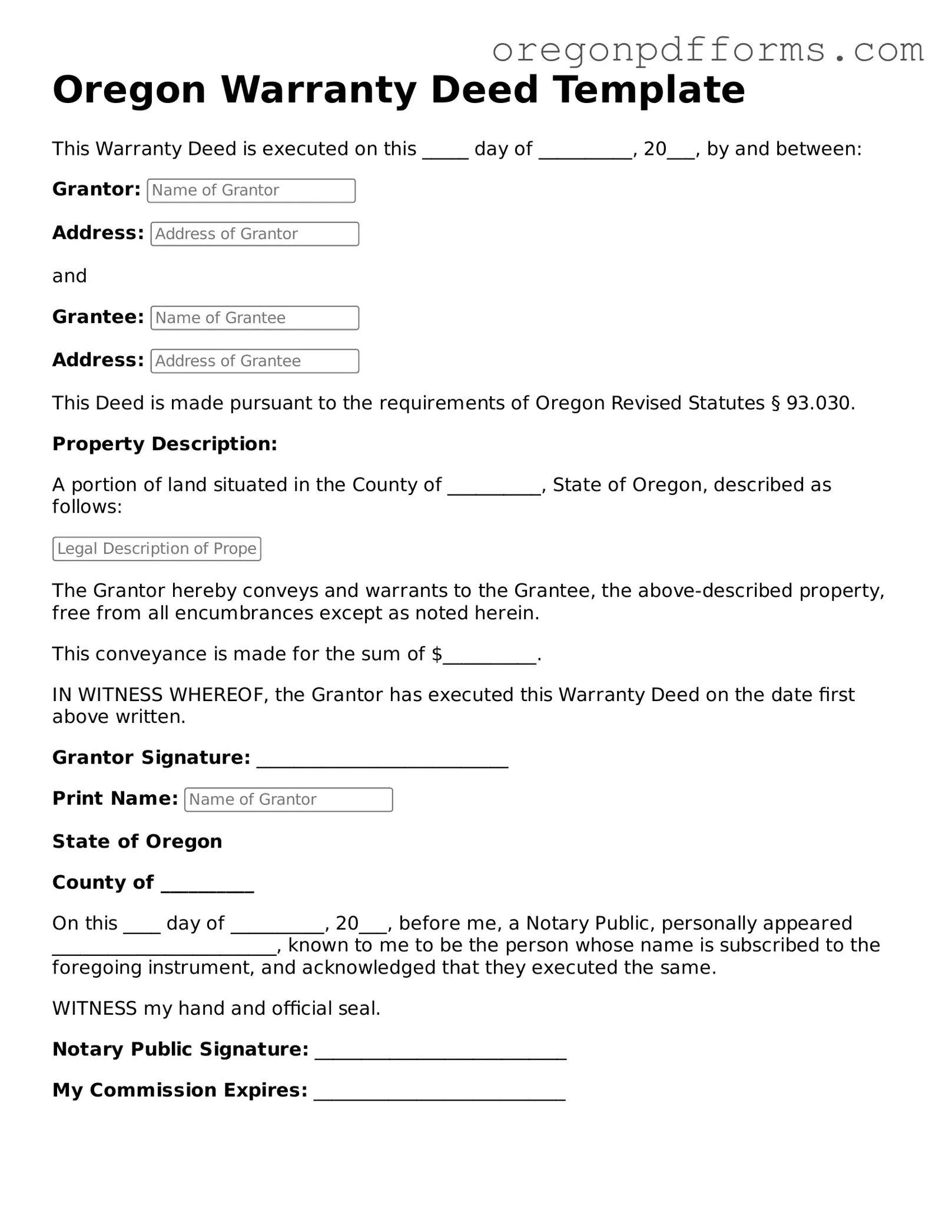An Oregon Deed form is a legal document used to transfer ownership of real estate from one party to another in the state of Oregon. This form serves as proof of the transfer and outlines the details of the transaction, including the names of the parties involved, the property description, and any conditions of the transfer.
What types of deeds are available in Oregon?
Oregon recognizes several types of deeds, including:
-
Warranty Deed:
Provides a guarantee that the seller holds clear title to the property.
-
Quitclaim Deed:
Transfers whatever interest the seller has in the property without any guarantees.
-
Grant Deed:
Implies that the seller has not transferred the property to anyone else and that the property is free from encumbrances.
Yes, the Oregon Deed form must be notarized to be legally binding. This means a notary public needs to witness the signing of the document. Notarization helps verify the identities of the parties involved and adds an extra layer of authenticity to the deed.
Filling out the Oregon Deed form involves several key steps:
-
Provide the names and addresses of both the grantor (seller) and grantee (buyer).
-
Clearly describe the property being transferred, including its legal description.
-
Include any special conditions or terms of the transfer, if applicable.
-
Sign the form in the presence of a notary public.
After completing and notarizing the Oregon Deed form, you must file it with the county clerk's office in the county where the property is located. This filing ensures that the transfer of ownership is recorded and made public.
Yes, there are typically fees associated with filing the Oregon Deed form. These fees can vary by county, so it is advisable to check with the local county clerk's office for the exact amount. Additionally, there may be fees for notarization and any additional services you may require.
If you do not file the Oregon Deed form, the transfer of ownership will not be legally recognized. This can lead to complications, such as disputes over property rights and difficulties in selling or refinancing the property in the future. Filing the deed is crucial for ensuring that your ownership is officially recorded.
